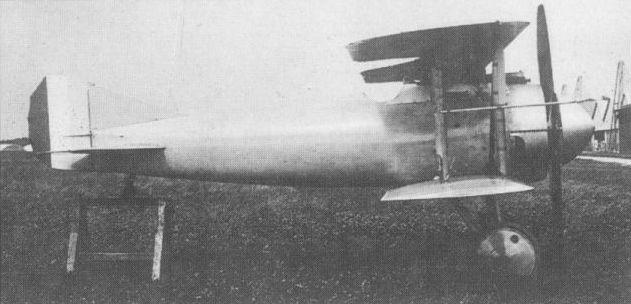W.Green, G.Swanborough The Complete Book of Fighters
SPAD S.XV France
After Louis Bechereau left SPAD in the spring of 1917, responsibility for subsequent aircraft design devolved upon Andre Herbemont, and the first fighter entirely of his creation was the S.XV, a small single-seater with twin synchronised 7,7-mm Vickers guns, and, initially, a 160 hp Gnome Monosoupape rotary engine. The S.XV had a clean, wooden monocoque fuselage, single-bay wings and a large spinner-like fairing ahead of the propeller (probably similar to the Nieuport cone de penetration). The S.XV first flew on 31 July 1917, and a second version, the S.XV/2 with extended wings, a redesigned tail and a simplified engine installation, followed in August. Neither was a success and some redesign was undertaken, the S.XV/3 with a lengthened fuselage having reportedly flown in January 1918. A fourth version, the S.XV/4, was to have had a 170 hp Le Rhone engine, but appears to have been abandoned by 1 May 1918, the date of an official listing. Two much-modified examples of the S.XV were built after the end of the War with the 80 hp Le Rhone engine as sporting single-seaters. The following data relate to the S.XV/2.
Max speed, 124 mph (199 km/h) at 6,560 ft (2 000 m).
Time to 6,560 ft (2 000 m), 5.67 min.
Endurance, 2.5 hrs.
Empty weight, 811 lb (368 kg).
Loaded weight, 1,378 lb (625 kg).
Span, 23 ft 3 1/2 in (7,10 m).
Length (S.XV), 17 ft 6 5/8 in (5,35 m).
Height, 7 ft 6 1/2 in (2,30 m).
Wing area, 188.4 sq ft (17,50 m2).




